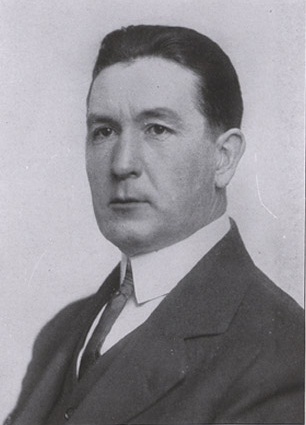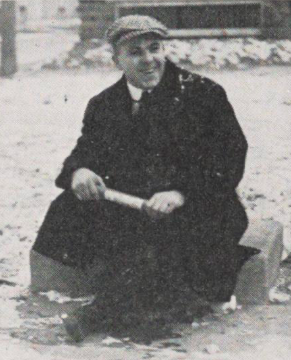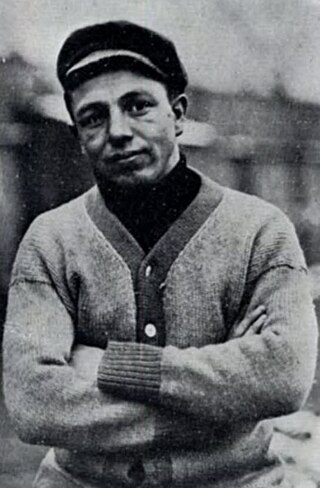Related Research Articles
The Akron Pros were a professional football team that played in Akron, Ohio from 1908 to 1926. The team originated in 1908 as a semi-pro team named the Akron Indians, but later became Akron Pros in 1920 as the team set out to become a charter member of the American Professional Football Association. Fritz Pollard, the first black head coach in the NFL, co-coached the Akron Pros in 1921. Paul Robeson played for the team in 1921 as well. He was among the earliest stars of professional football before football became segregated from 1934 to 1946. In 1926, the name was changed back to the Akron Indians, after the earlier semi-pro team. Due to financial problems, the team suspended operations in 1927 and surrendered its franchise the following year.
The Cleveland Tigers were the first Cleveland team franchise in what became the National Football League (NFL). The Tigers played in the "Ohio League" before joining the American Professional Football Association during the 1920 and 1921 seasons.

The Rock Island Independents were a professional American football team, based in Rock Island, Illinois, from 1907 to 1926. The Independents were a founding National Football League franchise. They hosted what has been retrospectively designated the first National Football League game on September 26, 1920, at Douglas Park. The Independents were founded in 1907 by Demetrius Clements as an independent football club. Hence, the team was named the "Independents."

Edward James "Doc" Stewart was an American football, basketball, and baseball player, coach, and college athletics administrator. He was also the founder, and player-coach of the Massillon Tigers professional football team.

Robert Parker Butler was an American gridiron football player best known for playing college football for the University of Wisconsin. Nicknamed "Butts", he was elected to the College Football Hall of Fame in 1972.
The Ohio League was an informal and loose association of American football clubs active between 1902 and 1919 that competed for the Ohio Independent Championship (OIC). As the name implied, its teams were mostly based in Ohio. It is the direct predecessor to the modern National Football League (NFL).
The Canton Bulldogs–Massillon Tigers betting scandal was the first major scandal in professional football in the United States. It refers to a series of allegations made by a Massillon, Ohio newspaper charging the Canton Bulldogs coach, Blondy Wallace, and Massillon Tigers end, Walter East, of conspiring to fix a two-game series between the two clubs. One account of the scandal called for Canton to win the first game and Massillon was to win the second, forcing a third game—with the biggest gate—to be played legitimately, with the 1906 Ohio League championship at stake. Another account accused Wallace and East of bribing Massillon players to throw a game in the series. Canton denied the charges, maintaining that Massillon only wanted to damage the club's reputation. Although Massillon could not prove that Canton had indeed thrown the second game and it remains unknown if there was ever a match-fixing agreement, the scandal tarnished the Bulldogs name and reportedly helped ruin professional football in Ohio until the mid-1910s.
The Massillon Tigers were an early professional football team from Massillon, Ohio. Playing in the "Ohio League", the team was a rival to the pre-National Football League version of the Canton Bulldogs. The Tigers won Ohio League championships in 1903, 1904, 1905, and 1906, then merged to become "All-Massillons" to win another title in 1907. The team returned as the Tigers in 1915 but, with the reemergence of the Bulldogs, only won one more Ohio League title. Pro football was popularized in Ohio when the amateur Massillon Tigers hired four Pittsburgh pros to play in the season-ending game against Akron. At the same time, pro football declined in the Pittsburgh area, and the emphasis on the pro game moved west from Pennsylvania to Ohio.
The 1920 Buffalo All-Americans season was the franchise's inaugural season with the American Professional Football Association (APFA), an American football league, and fifth total as a team. The All-Americans entered 1920 coming off a 9–1–1 record in 1919 as the Buffalo Prospects in the New York Pro Football League (NYPFL). Several representatives from another professional football league, the Ohio League, wanted to form a new national league, and thus the APFA was created.

The 1920 Canton Bulldogs season was the franchise's sixteenth and its first in the American Professional Football Association (APFA), which became the National Football League two years later. Jim Thorpe, the APFA's president, was Canton's coach and a back who played on the team. The Bulldogs entered the season coming off a 9–0–1 performance as Ohio League champions in 1919. The team opened the season with a 48–0 victory over the Pitcairn Quakers, and finished with a 7–4–2 record, taking eighth place in the 14-team APFA. A then-record crowd of 17,000 fans watched Canton's week 12 game against Union AA of Phoenixville.
Harry Fouts Hazlett was a career officer in the U.S. Army. Prior to that he was an American football coach for the Canton Professionals-Bulldogs of the "Ohio League", which was the direct predecessor to the modern National Football League. He was also the head football and basketball coach at Canton McKinley High School, Ohio.He was fired as the head coach of the Canton Bulldogs, by manager Jack Cusack, after he benched Canton rookie Jim Thorpe for the first game of the 1915 league title game. The first game in the two-game series resulted in a 16–0 victory over the Bulldogs by their rivals, the Massillon Tigers. It is unknown why Hazlett benched Thorpe. After Hazlett was fired, the Bulldogs' quarterback, Don Hamilton,left the team in protest. Thorpe was later named the team's new head coach and led the Bulldogs to the 1915 championship, which was split between Canton and Massillon.
Jack Cusack was an American professional football manager in the Ohio League. He served as the manager and owner of the Canton Bulldogs from 1912 to 1918. During his six years with the Canton Bulldogs, Cusack led the team to Ohio League championships in 1916 and 1917, and was responsible for bringing Jim Thorpe into professional football. Cusack also is responsible for helping revive the Bulldogs following the Canton Bulldogs-Massillon Tigers Betting Scandal, which eroded public support for the game from 1906 until 1911. He also ensured that the Bulldogs had a sturdy financial foundation for when they would later enter the National Football League (NFL). In 1918, Cusack left football to enter the oil and gasoline business in Oklahoma. He later worked as an independent oil operator in Fort Worth, Texas.

George Watson "Peggy" Parratt was a professional football player who played in the "Ohio League" prior to its becoming a part of the National Football League (NFL). Born in Cleveland, Ohio, Parratt played quarterback for the Shelby Blues, Lorain Pros, Massillon Tigers, Massillon All-Stars, Franklin Athletic Club of Cleveland, Akron Indians and the Cleveland Tigers between 1905 and 1916. Parratt threw the first legal forward pass in professional football history while playing for the Massillon Tigers on October 25, 1906.

Walter Harrison Flanigan was an American football player and owner of the Rock Island Independents. He was also one of the co-founders of the National Football League (NFL).
Pro Football: Its Ups and Downs, published in 1934, is a book by Dr. Harry March that was the first ever attempt to write a history of professional American football. March had served in several executive offices with the New York Giants of the National Football League in the late 1920s and was a founder of the second American Football League. The book, while popular and entertaining with some important information and interesting anecdotes, is often viewed as inaccurate by modern sports historians. Jack Cusack, manager of the Canton Bulldogs from 1912 to 1917, summed up the book's flaws by stating; "In my library is a book... entitled Pro Football: Its "Ups and Downs" and in my opinion it is something of a historical novel."
Sherburne Henry Wightman was a professional American football player-coach in the "Ohio League", which was the direct predecessor to the modern National Football League (NFL). He is best remembered for coaching the Massillon Tigers to an Ohio League title in 1906, over the Canton Bulldogs, which led to accusations of a betting scandal. In 1907, he coached a version of the Massillon Tigers called the "All-Massillons" to another Ohio League title. Prior to his professional career, Wightman played at the college level for the Chicago Maroons, under Amos Alonzo Stagg, and Swarthmore College.
The 1915 Massillon Tigers football season was the sixth season of competition for the Massillon Tigers franchise, and their first season since 1907. The team posted a 5–2 record and obtained a share of the 1915 Ohio League Championship, with the Canton Bulldogs and the Youngstown Patricians.

Frederick Lee "Fritz" Rehor was an American football player. He played college football for Fielding H. Yost's Michigan Wolverines football teams from 1914 to 1916. He also played professional football and was a member of the 1917 professional football champion Massillon Tigers, coached by Knute Rockne. He later operated a drug store in Canton, Ohio.
The Akron Champs was the dominant name of a minor league baseball team that represented Akron, Ohio between 1907 and 1911. The Champs won four consecutive Ohio–Pennsylvania League championships from 1908 to 1911.
The Canton Bulldogs were a professional American football team, based in Canton, Ohio. They played in the Ohio League from 1903 to 1906 and 1911 to 1919, and the American Professional Football Association, from 1920 to 1923, and again from 1925 to 1926. The Bulldogs won the 1916, 1917, and 1919 Ohio League championships. They were the NFL champions in 1922 and 1923. In 1921–1923, the Bulldogs played 25 straight games without a defeat. This remains an NFL record.
References
- ↑ "Heralds Win; Maroons Lose". Detroit Free Press . October 25, 1915. p. 6. Retrieved July 17, 2023– via newspapers.com.
- ↑ "Massillon Tigers". The Cincinnati Enquirer . November 15, 1915. p. 9. Retrieved July 17, 2023– via newspapers.com.
- ↑ "Jim Thorpe Played". The Cincinnati Enquirer . November 29, 1915. p. 8. Retrieved July 17, 2023– via newspapers.com.